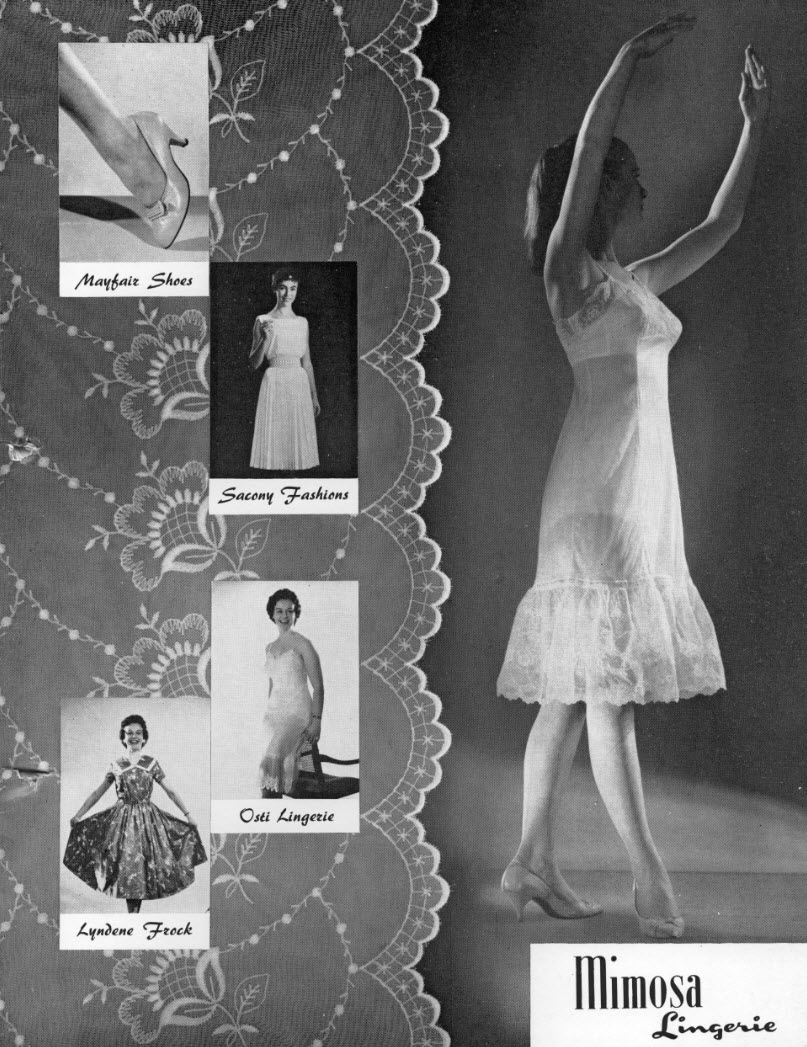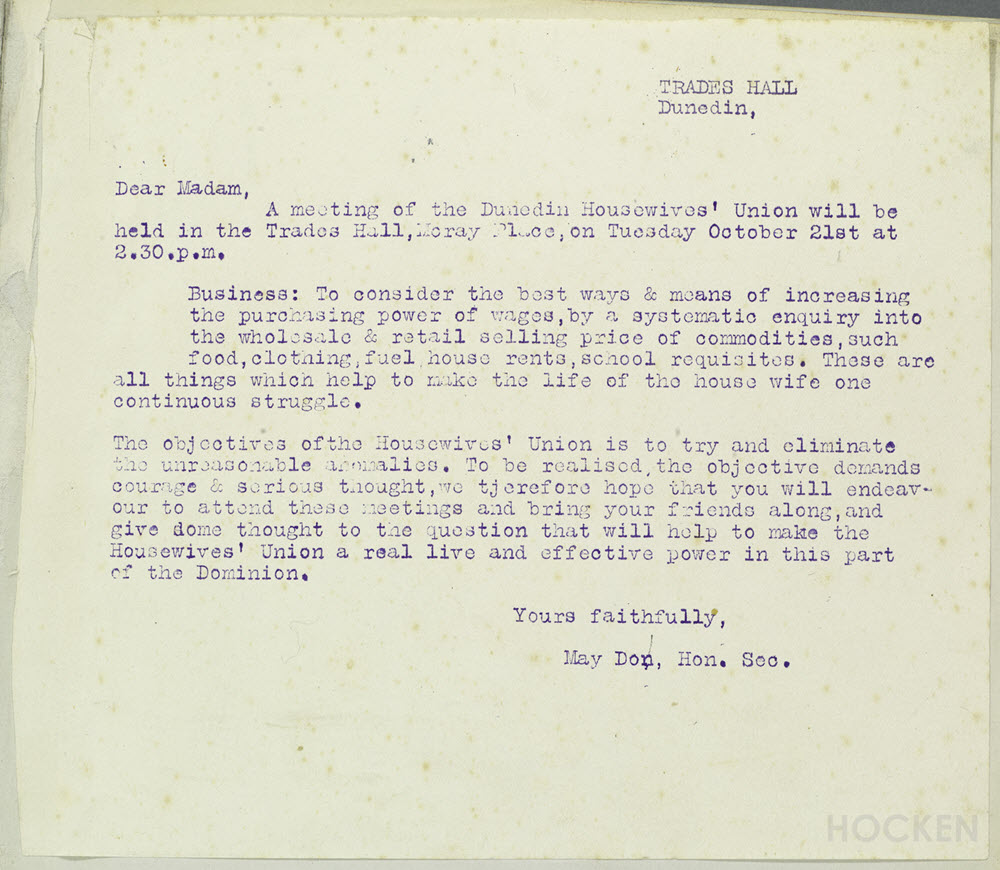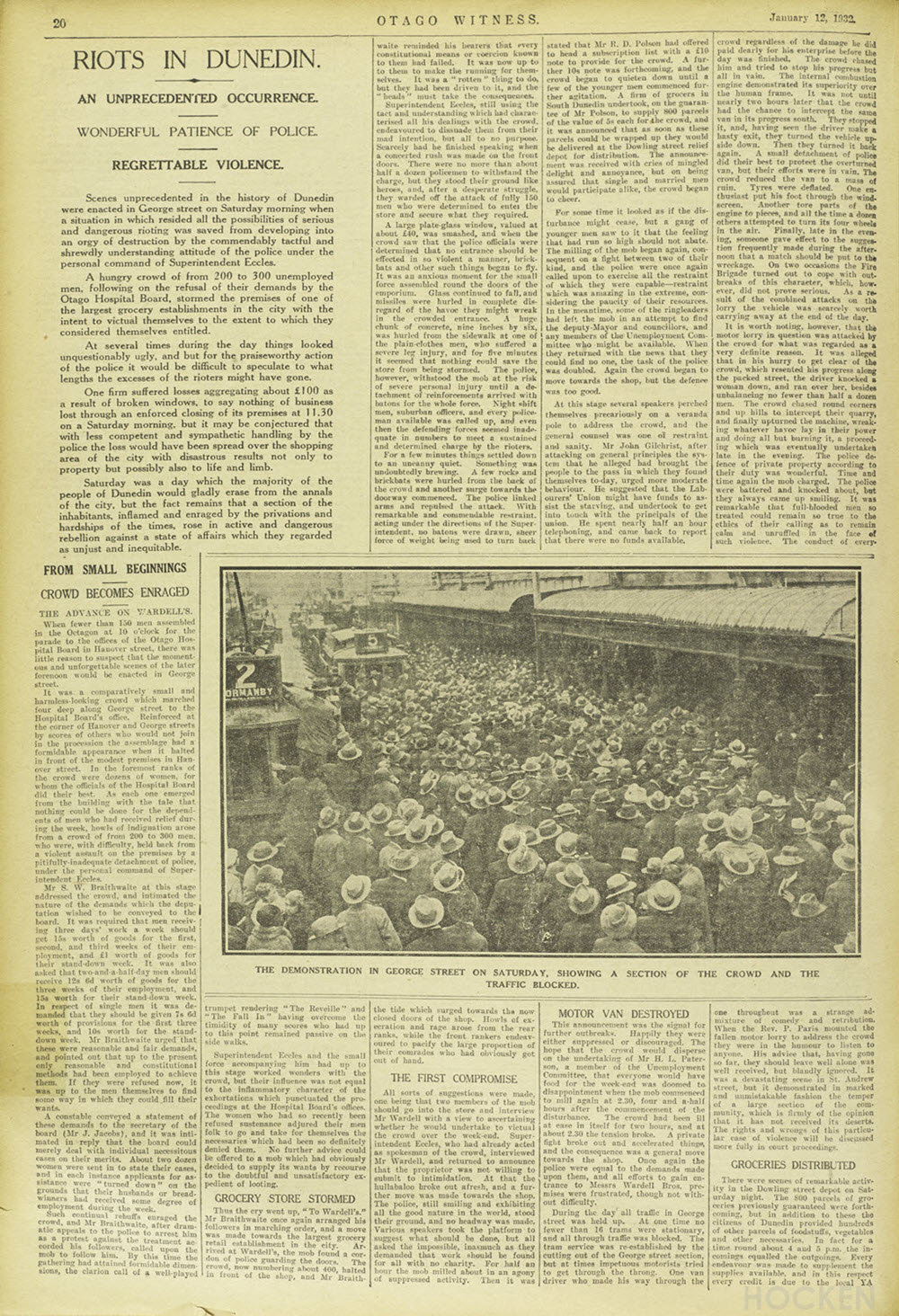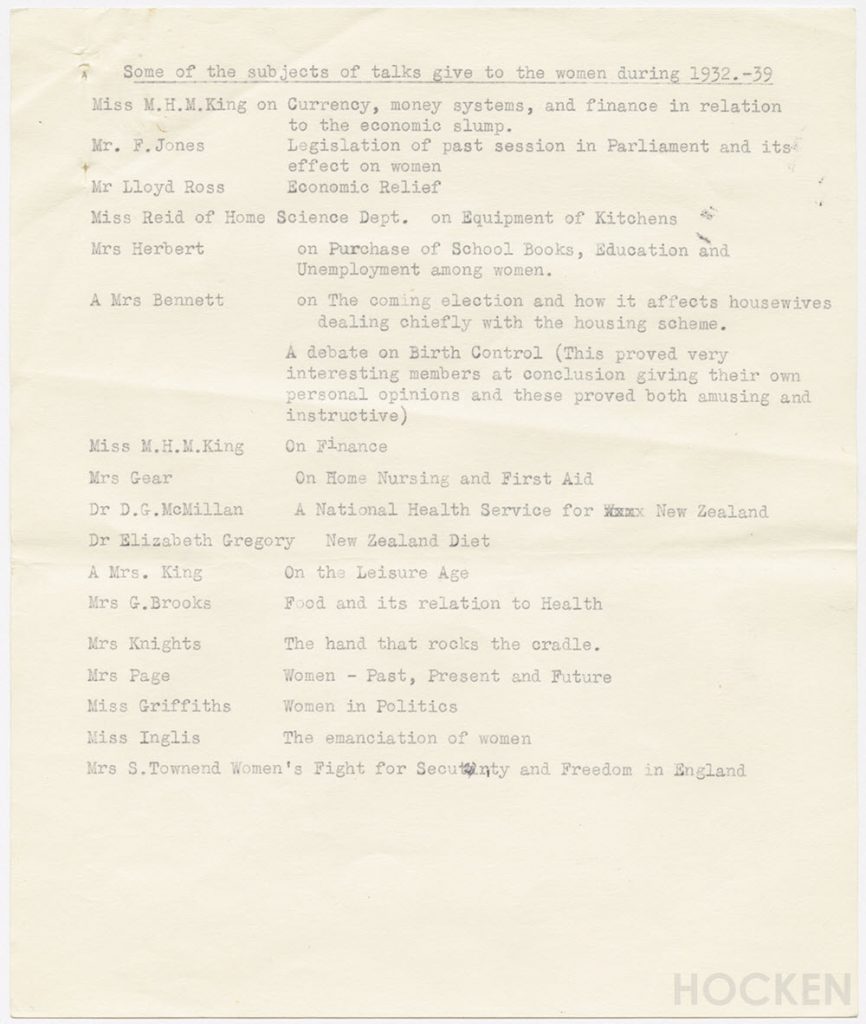Post by Amanda Mills, Curator of Music and AV
It’s iD fashion week here in Dunedin, and an opportunity to highlight an interesting piece of fashion-related audiovisual material in Hocken’s collections. The song It’s Fashion by Jack Roberts and Ian Couldrey was created as the theme for Ross and Glendining’s fashion show.
Credit It’s Fashion. 1961. Lyrics by Ian Couldrey, and music by Jack Roberts. Hocken Sound Recordings Rec-S 3362
The company Ross and Glendining (founded by John Ross and Robert Glendining) was established in Dunedin in 1862, when they bought a local Dunedin retail drapery business. Changing to an import and warehousing business within three years, they sold imported fashion goods, though some of the most popular goods sold included blankets, and hosiery. To create woollens, they built the Roslyn Woolen Mill in 1879 for production of consumables like yarn, blankets and flannels, and several years later, they introduced knitting machines to produce hosiery and clothing. While expanding their clothing manufacturing business throughout New Zealand, Dunedin was still their main centre, opening a clothing factory in 1883 to manufacture men’s and boy’s clothing (under the Roslyn label), a hat factory in 1901, and also manufacturing footwear from 1908, and neckwear from 1957. The list of brands Ross and Glendining manufactured was large, and included Mayfair Shoes, Roslyn Blankets and Rugs, Osti Lingerie, Glenross Millinery, Aotea Knitting Wool, and Sacony Fashions.

Mimosa Lingerie.[1959]. Ross and Glendining: Records, Hocken Collections AG-512/066 S09-529g.
Unfortunately, the motion picture of this 1960 show is not part of Hocken’s large collection of Ross and Glendining records; in fact, no copies seem to exist. This is a significant gap in the collection, and, if found, would be a fantastic addition to our records of the company.
It’s Fashion is stated as being written for Ross and Glendining’s 1961 fashion show, but the annual reports and records don’t document any event that year, so the date may have been incorrectly attributed – perhaps the song was written for the 1960 show. It’s Fashion was written for the event by Roberts and Couldrey. The song is in the popular genre of the day – a charming piano-driven mid-tempo, melodic pop-ballad, sung in the style of Doris Day (sadly, there is no mention of the female vocalist’s name). The performance is sweet, and appropriate for the show, which while innovative at the time, would likely not be cutting-edge by today’s standards. Regardless, this lovely song is one of few recorded specifically for a fashion show and an interesting, and modern, approach for Ross and Glendining to take to advertise their fashion lines.
It’s Fashion.
References:
Jones, S.R.H. (2010). Doing well and doing good: Ross and Glendining Scottish enterprise in New Zealand. Dunedin, New Zealand: Otago University Press.







